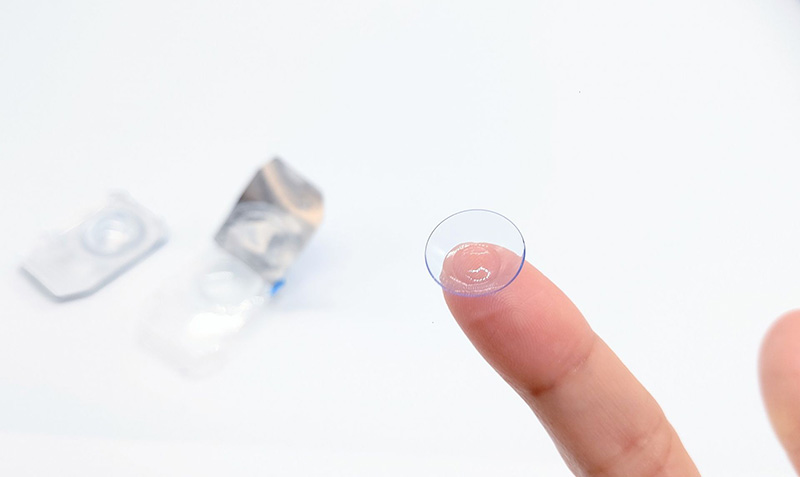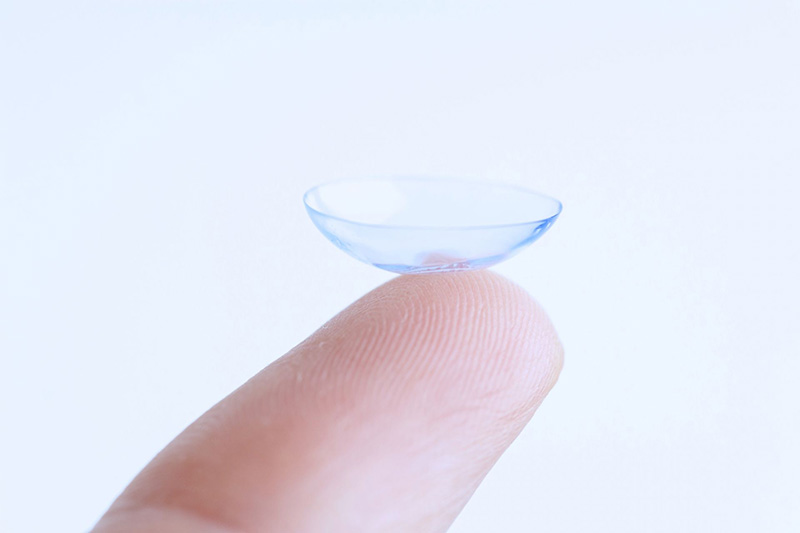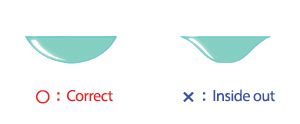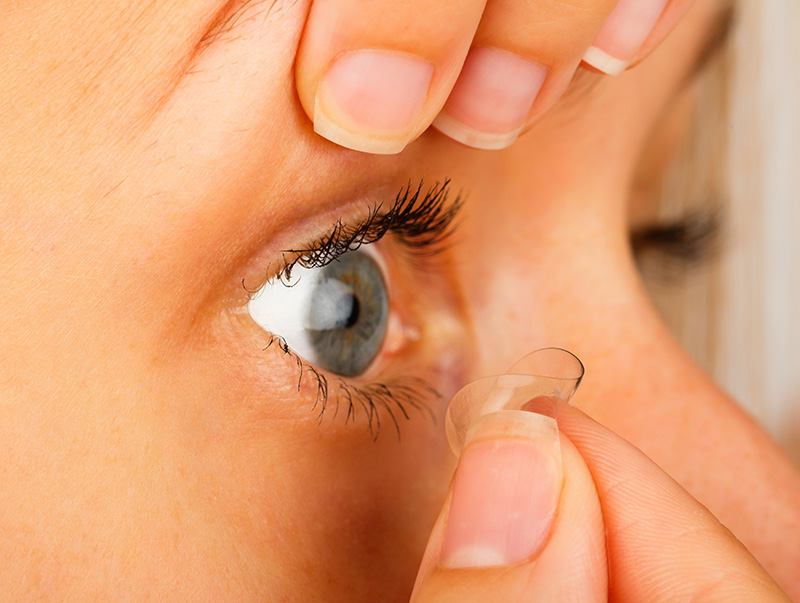How to Safely Insert and Remove Contact Lenses from Your Eyes

Thinking about giving contact lenses a shot for the first time?
But worried about nailing the whole process of inserting and removing them?
You're not alone.
When considering the use of contact lenses, many people may have the following concerns:
- Worried about inserting something foreign into their eyes.
- Worried that contact lenses might cause discomfort to the eyes.
- Finding it a bit tricky to insert and remove contact lenses.
Many new contact lens wearers have these concerns. However, because soft contact lenses are made from a soft material with high moisture content, these concerns can be quickly alleviated and users are left with a comfortable experience.
Furthermore, there are special techniques for inserting and removing contact lenses, and with the right knowledge, there’s no need to worry.
This article provides some useful tips on how to insert and remove soft contact lenses for those considering using them or existing users.
Important Precautions Before Handling Contact Lenses

First of all, contact lenses are legally classified as medical devices. Therefore, you must consult with an eye specialist to obtain a valid prescription before you purchase contact lenses.
Even if you don't need vision correction and are using colour contact lenses for cosmetic purposes, a valid prescription with your eye details, including the base curve, diameter, and more, is still required.
Please be aware that we are not liable for any difficulties or issues which may arise from the use of contact lenses, it is your responsibility to ensure that they are the perfect fit for you according to an eye care specialist.
What To Do Before Handling Lenses
Before you pop in your contact lenses, take a quick look at these handling tips. They're crucial for a comfortable lens experience and for the well-being of your eyes.
- Keep your nails short and smooth to prevent damage to contact lenses.
- Wash your hands thoroughly with soap and dry with a clean towel before handling lenses.
- Gently use your index finger to remove lenses from the case, as they may tear easily.
- Inspect contact lenses for damage before wearing them. If they are scratched, damaged, deformed, or stained, do not use them.
- Apply makeup before inserting lenses to avoid transferring residues.
- Remove lenses before makeup removal to prevent irritations to your eyes.
- Follow the recommended wearing schedule and time for your specific type of contact lenses.
- Read and follow the instructions for storage solutions and lens cases provided with your lenses.
- Never clean lenses with tap water to avoid deformation, discolouration, and the risk of eye disorders, as tap water may contain microorganisms or bacteria. Use appropriate lens solutions to ensure proper care and minimise potential health risks.
- If a lens falls out, clean it with solution before re-inserting them. When in doubt, consult with your eye specialist.
A Guide to Inserting a Soft Contact Lens

The first step when you're ready to insert your contact lenses is to ensure that the lens is not inside out. Soft contact lenses are thin and flexible, which can make it challenging to distinguish the correct orientation. It's a good practice to check if your lens is inside out before inserting it into your eye. Failing to do so may lead to discomfort, along with potential signs such as blurred vision and increased lens movement with each blink.
Two Methods to Check if a Contact Lens is Inside Out
Place the lens on the tip of your index finger, ensuring that the edges face upward. Inspect the rim at eye level – if the edges flare out, the lens is probably inside out. A properly oriented lens should display flat, even edges across its entire surface.
Some lenses may have markings to distinguish the front and back of the lens.

For soft contact lenses designed for astigmatism, some may feature a 'guide mark' to ensure the lens stabilises in the correct orientation immediately after wearing. If your lens has a guide mark, make sure to wear it in the specified direction indicated by the mark. Even for astigmatism contact lenses without a guide mark, they are designed to naturally stabilise in the correct orientation with each blink.
Recommended Techniques for Inserting Soft Contact Lenses

While looking into the mirror with both eyes, you can easily put on the lenses by following these steps:
1. Open Your Eyes Widely:
Begin by using the middle finger of the hand holding the lens to gently pull the lower eyelid downwards and then lift the upper eyelid with a finger from the other hand or use two fingers from the free hand to hold your eyes wide open.
2. Insert the Contact Lenses:
Take out a lens from a case and place it on your finger the correct way up and maintain a direct gaze into the mirror. Gently place the lens onto your eye whilst ensuring your eye stays wide open.
3. Settling the Lenses:
Once the lens is in place on the eye, release your fingers and blink slowly, and allow the lens to comfortably settle within the eye.
What are the main reasons for difficulty inserting contact lenses?
Not opening the eyes wide enough:
If the eyes aren't opened wide, the lenses might not be inserted properly, potentially touching and irritating the eyelids or eyelashes. Use your fingers to gently pull both upper and lower eyelids to ensure your eyes are fully open.
Blinking during insertion:
Some people unconsciously blink due to fear when inserting lenses. To overcome this, use a mirror for guidance, firmly hold your eyelids, and keep your eyes wide open during insertion.
Air trapped between the lenses and the eyes:
If the lens quickly comes off after placing it on your eye, there might be air trapped. Blink slowly after insertion and move your eyes around to help the lens adjust.
Handling the lenses:
Moist fingertips can make the lenses stick and can be challenging to handle. After washing your hands, make sure to thoroughly dry them before touching the lenses. Also, ensure the lens isn't tilted on your fingertip before insertion.
Recommended Techniques for Removing Soft Contact Lenses

Similar to inserting your contact lenses, ensure your hands are clean before you proceed to remove a contact lens. When you are ready to begin, follow these simple:
1. Confirm the Lens Position:
Tilt your chin slightly downward and look up at the mirror to confirm the position of the lens.
2. Open Your Eyes As Wide As Possible:
Use your fingers to hold down both the upper and lower eyelids, ensuring your eyes are open wide.
3. Remove the Contact Lens:
Use your thumb and index finger to press the lower part of the lens, pinch it, and gently remove it.
What are the main reasons for difficulty removing contact lenses?
The contact lenses may be stuck to the eyes:
Extended wear, sleeping with lenses on, dry eyes, or exposure to environmental factors can cause the lenses to stick to the eye, making it difficult to remove. To resolve this, simply blink slowly a few times, use eye drops to moisturise the contact lenses and the eyes, and then proceed to remove the lenses.
When dry contact lenses stick to the cornea and become difficult to remove easily, attempting to force them off may risk damaging the cornea. Therefore, it is advisable to first moisturise both the contact lenses and the eyes before attempting to remove them.
The lens is slippery and difficult to grasp with the fingers:
In the case of soft contact lenses, if your fingers are wet, the lens may become slippery, making it difficult to grip effectively. Before removing the lens, ensure that after washing your hands, you thoroughly dry your fingers to eliminate any moisture.
The contact lens is stuck to the back of the eyelid:
Occasionally, when a contact lens shifts away from the cornea, it may be stuck to the back of the eyelid. In such cases, blink slowly or move your eyes in various directions to reposition the contact lens back onto the cornea before removing it.
When contact lenses shift around, there may be concerns that they have slipped behind the eye. But in reality, due to the structure of the eyes, contact lenses have been designed not to go behind the eye.

At first, putting on and taking off contact lenses may feel a bit uneasy, but if you continue to follow these steps, you will get the hang of it and start to smoothly and comfortably wear contact lenses!
Whether you are a beginner or a regular contact lens user, please check out this blog to ensure you are following the correct way of putting on and removing contact lenses. Please remember these helpful tips to keep your eyes healthy at all times!
